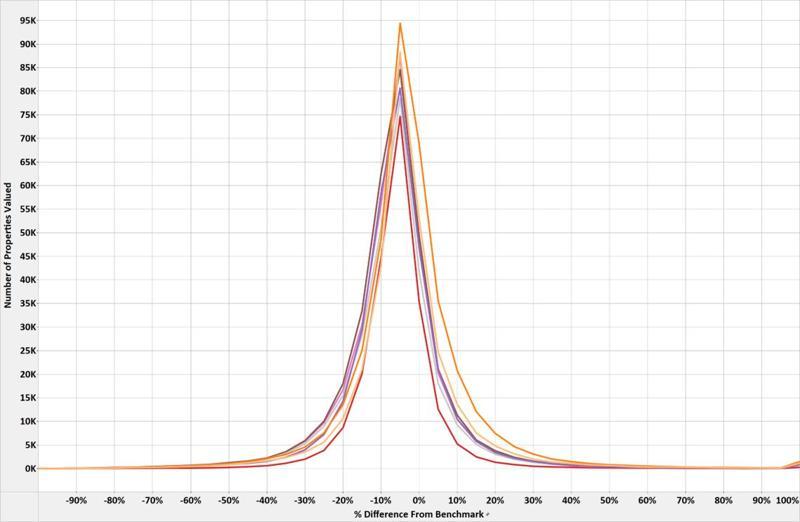Posted on September 12, 2022

Jedcointl Holdings, LLC – (BUSINESS WIRE), founder & Chairman Jon DeAncey, recently was the keynote speaker at the National Association of Mortgage Lenders convention in Las Vegas, Nevada; about the shifting marketplace changing market values.
With 2022 more than halfway behind us, economic indicators continue to forecast minimal refinance volume while purchase volume faces its own headwinds. Between lack of inventory, record high prices, rising interest rates and significant affordability issues, challenges for the purchase and refi markets are leading to a time of opportunity for home equity lending.
In the last five years alone, homeowners have gained, on average, $125,000 in equity on their properties. With so much new equity, homeowners are looking for ways to use that equity rather than trying to buy a different property during a time of price elevation. In fact, remodeling expenditures set a new annual high of $391 billion in Q1 of 2022 – a number that’s difficult to ignore.
For lenders, these economic indicators mean now is the right time to ensure your home equity lending program is established and able to operate with a high level of efficiency. However, many lenders have issues building profitable home equity programs due to some misconceptions about handling valuations in a way that ensures they are underwriting quality loans.
By clearing up these common misconceptions surrounding what collateral valuation solutions are most effective given their lending footprint, lenders can feel more confident about their home equity lending operations. Lenders with a strong sense of how to properly select and deploy the correct collateral valuation solution can create home equity lending programs that will continue to provide a steady stream of business, while also reducing their costs and time to close.
Misconception #1: You need an appraisal every time you do a loan
The appraisal process can be both lengthy and stressful, especially for the homeowner. It may even be enough to dissuade some from initiating the home equity loan process. However, while it’s true for most of the purchase market, for home equity loans, valuations can often be done using a waterfall of valuation products – starting at an AVM with a Property Condition Report (PCR), evaluations, desk reviews of existing appraisals, desktop and drive-by appraisals, and, if all else fails, a full appraisal can be ordered.
The 2010 Interagency Guidelines, provided by the FDIC, offer context for when and how certain valuation solutions can be used in home lending situations. According to these guidelines many home equity loans can bypass traditional appraisals, saving days or weeks off your underwriting timelines. AVMs can be completed in minutes, and PCRs often take as little as two to three days. Compared to the full appraisal process which historically takes several weeks to complete and costs several hundred dollars, these options are far more appealing to your bottom line, and to the homeowner’s timeline.
With this in mind, it may seem like a no-brainer that AVMs and PCRs are the more attractive choice. However, it’s essential to remember that not every scenario is suitable for AVMs. Lenders should determine this by the quality of housing data on a county-by-county level in the areas their lending business serves.
Getting this mix right is critical, especially considering that lenders traditionally pay for the cost of property valuation in home equity lending. Making sure you know what combination of valuation products to use at the outset in each area can save a lot of time and money.
Misconception #2: AVMs are not an accurate way to gauge home value
As the US made its way out of the Great Recession, a common misconception arose regarding the accuracy of AVMs. During this period, AVMs earned a less-than-stellar reputation for inaccurately valuing properties. But this reputation wasn’t justly earned. The misconception primarily stemmed not from the quality of the AVMs, but from the misuse of AVMs.
Lenders tended to use AVMs in every situation as an end-all-be-all for estimating a home’s value. Luckily, much has changed since then. With the introduction of the 2010 Interagency Guidelines, lenders were finally given a framework for the responsible use of AVMs, providing the necessary framework to ensure the proper use of the different valuation products.
Additionally, technological advances such as the incorporation of artificial intelligence (AI), machine learning, geospatial data and more have led to AVMs that are far more accurate and able to adapt to rapidly changing market conditions quickly.
These improvements and advancements have resulted in a majority of AVMs that provide values within +/- 5% of a home’s actual value.
Misconception #3: Doing required testing is expensive and complicated
With AVMs becoming somewhat of a pillar in home equity lending, lenders who offer AVMs have the responsibility of ensuring that they understand the model and its performance over time. Testing guidelines for AVMs can seem quite complicated, especially for those lenders who aren’t part of massive organizations that employ statisticians and analytics experts.
For small and mid-sized lenders who don’t have a large presence across the country, doing their own AVM testing just isn’t a viable option. Fortunately, third-party organizations can provide lenders with the independent AVM testing data they need to meet accuracy guidelines. These providers can work with lenders to provide the resources necessary to fulfill strict testing requirements, regardless of the size of your business.
Lenders looking to partner with AVM testing providers should prioritize highly accurate, lending-grade AVMs that use a combination of valuation expertise, quality data and AI or machine learning. It’s key that testing providers use accepted testing benchmarks that deliver accurate and up-to-date data to ensure that the AVMs being tested are compared against the most recent data available.
